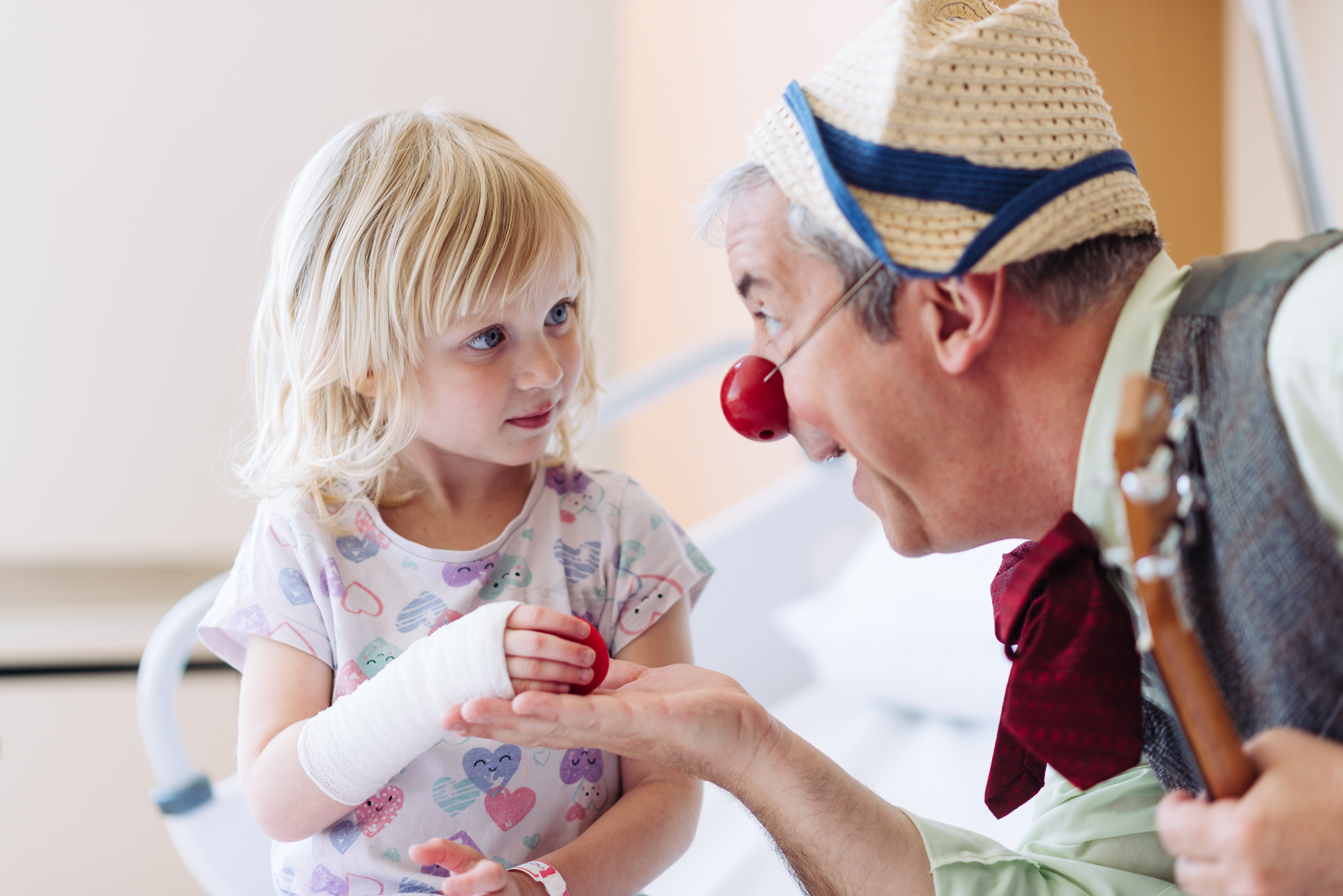
The nurse told me that she would take away my little bear if I continued crying. It was the only toy I had with me in hospital and it gave me so much comfort when I missed my parents the most.
At that time, I was only 2 years old and my stay in the hospital lasted 10 months. It was a nightmare for me. Until the age of 6, several lung infections kept coming back again and again and I finally had to undergo a therapy in a pulmonary sanatorium. I still remember this time as if it had been yesterday: lying still in bed, no noise, no visits, no toys allowed, no playing. Nothing but loneliness, fear and anxiousness. For weeks and months.
Later in my life, during the 1990s, I had a top job at an international organisation; I once read an article in the LIFE Magazine, which immediately resonated with me. The article was about the first hospital clown in New York, Michael Christensen, and his joyful impact on sick children.
I had to think back on my painful times in the hospital and started crying. Hospitals used to be a place of sickness, suffering and even death. The article impressed me, because Michael Christensen could bring such a strength, power and positive energy into these places.
Then I did something very unusual. I had this deep desire that no child should suffer from loneliness and sadness in hospital again. Therefore, I quit my well-paid job, as I was inspired to set up a similar healthcare clown organisation. At the same time, I partnered with the artist and clown expert Giora Seeliger, who knew about the strength and vitality of humour and art due to his many years of stage experience all over Europe.
At the beginning the doctors and the nursing staff were very sceptical and feared that we would turn the daily routine of the hospital upside down, bringing chaos and creating unrest with the children. We had to be very diplomatic and convincing. However, when they heard the first children laughing, experiencing relaxed and positive patients afterwards, they were convinced of the work of hospital clowns.
Today our professionally trained clowns are accepted and even involved in difficult treatments, because they can create a positive atmosphere, gently diverting the child’s focus away from the often painful medical procedures. The medical staff and the families gave us feedback that the clowns reduced stress and anxiety during the treatments, not only for the sick children, but also for the medical staff and parents.
Nowadays, even the World Health Organisaton (WHO) claims that art and humour have a robust impact on mental and physical health, resulting in remarkable economic benefits as well!
I am honoured that doctors and nurses see that clown visits have an important impact on the psychosocial wellbeing and the recovery process of sick children. They experienced that it is not about having a circus show but about building a supportive and positive spirit in the hospital room, uplifting the emotional state of children, boosting the acceptance of medical treatments and thus enhancing the healing process.
My message to anyone reading this is that children’s emotions matter. Nowadays, it has become common practice in the western world that a paediatric ward gets regular visits from clown doctors. With that, hospitals turn more and more into child friendly places, where it is all about humans, emotions and connection. Moreover, fun!

